About Us
A very warm welcome to the church whose congregation has, since it was established in 1884, worshipped in two schools and three churches.
Our Aim as a Church
Belief
Belief in God as Father, Son and Holy Spirit is at the heart of our faith. Christians believe that Jesus is God’s Son. Jesus reveals to us that God is our Father, and that God is available to us through the Holy Spirit.
You won’t ever be asked if you completely understand all this. But you are asked whether you believe and trust. This is called faith. It is a different sort of knowledge. It is the knowledge of being known and loved, and of loving in return.
The Christian faith is not a human invention. There are signs of God’s existence and handiwork in creation for anyone to read (Acts 14.15–17). But we believe in the way we do because God has come to seek us out and has made himself known to us.
Commitment
When someone becomes a follower of Jesus they are baptized. (Or, if they have already been baptized, they will confirm for themselves the promises made at their baptism.) During this service a series of questions will be asked – in most respects the questions asked today are the same as those new Christians were asked in the earliest days of the Church.
Brothers and sisters, I ask you to profess together the faith of the Church.
- Do you believe and trust in God the Father?
- Do you believe and trust in his Son Jesus Christ?
- Do you believe and trust in the Holy Spirit?
Everyone answers with either a simple ‘I believe and trust in him’, or by reciting the three parts of the Apostles’ Creed, one of the most ancient summaries of the Christian faith.
Being a Christian means responding to Jesus' invitation to enjoy a relationship with God here on earth and for eternity.
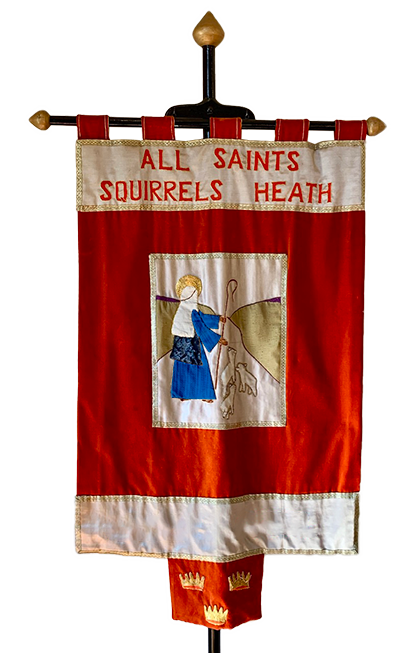
The colours of the web site reflect the traditional historic colours of All Saints.
Blue signifying Divine Contemplation, Red, emblematic of the Passion of Our Lord and also the emblem of Martyrdom.
Gold was added, the emblem of Brightness and Glory.
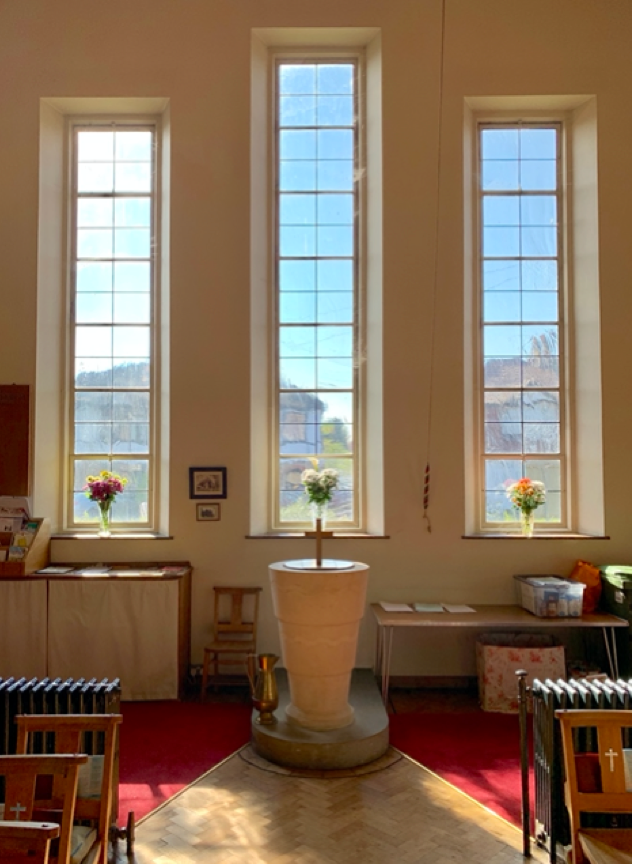
Living out our faith
Christians believe that love is at the heart of God’s will for our lives – love for God and love for others.
Loving God and loving neighbour belong together, and the best, most fruitful life is lived in loving communion with God our Creator, as well as with our fellow human beings.
See how other Christians are serving and living out their faith in these videos.
See videos here.
Our Team and their reponsiblities
Lisa
Resident Priest in Charge
Laurie Cowie
Laurie Cowie - Church Warden, Deanery Synod Representative and PCC Member
lauriecowie00@gmail.com
Bob Wickington
Bob Wickington - PCC Member and the Church Treasurer.
Richard Benson
Richard Benson - Authorised Lay Preacher.
Helen Pugh
Helen Pugh - PCC Secretary, Deanery Synod Representative and Safeguarding Officer.
helenpugh254@gmail.com
Andrew Maxey
Andrew Maxey - PCC Member and the Electoral Roll Officer.
Lynda Ross
Lynda Ross - PCC Member
“Stay n’ Play” Leader.
Kate Higgs
Kate Higgs - Children & Youth Leader.
Ann Cowie
Ann Cowie - Assistant Children & Youth Leader.
Flower Arranging Lead.
"They say we are a congregation that has worshipped in two schools and three churches"
History of Squirrels Heath All Saints by John Winn
Scroll down to see the Church Timeline tracing our development since 1884
Looking Back 135 Years
It is situated in the midst of richly wooed parkland and verdant meadows just over a mile to the east of Romford Market.
The village was certainly starting to look up, for today their own church (well really a daughter church of St Edward's) called All Saints Chapel, was being dedicated by the Bishop of Colchester. The chapel consists of chancel, nave and a bell cot containing one bell, and was dedicated Aug. 5th, 1884, by the Lord Bishop of Colchester: a vestry and parish room were to be added in 1892.
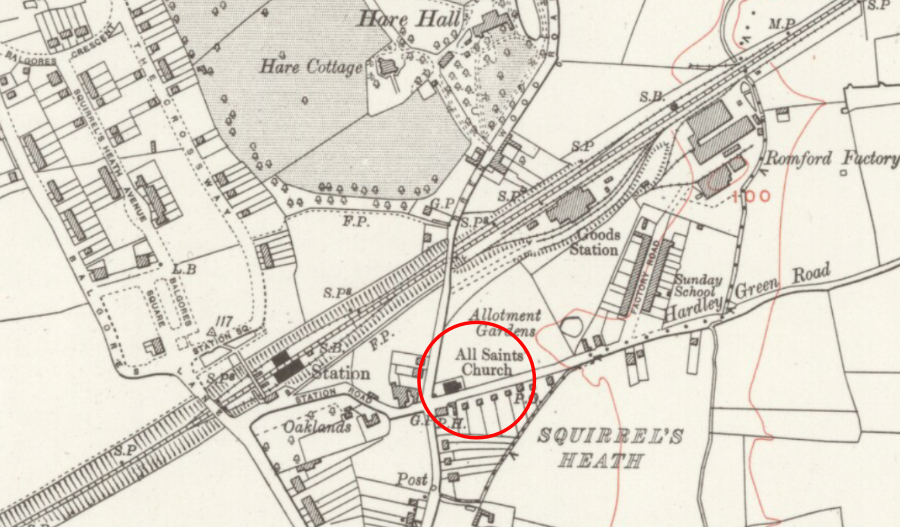
Click away from map to close it.
The First Church
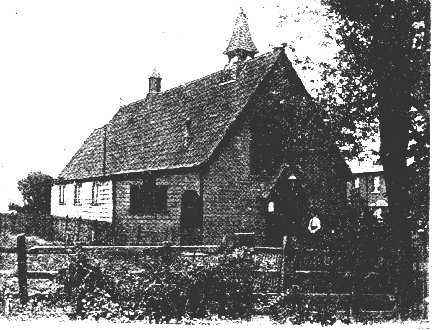
These services had so increased in popularity that the school room was no longer adequate and the vicar of St Edward's, the Rev Canon Hitchcock, decided that Squirrels Heath should have its own building.
The entire cost of the structure, including the conveyance of the land, drainage, etc, was £370. Many gifts were given towards the furnishings of the chapel which was completely fitted out, at a cost of £125, The building, of wood on a foundation of brickwork, was designed by Mr R N Speir of Perthshire. It consisted of a nave and chancel, and accommodated 150 people, the dimensions of the nave being 50 feet by 23 feet and the chancel 16 feet square.

It was entered at the west end through a porch on either side of which, curtained off from the nave, was a small vestry. The high pitched roof was covered with tiles and internally the walls were plastered down to the dado. The building was lit by gas and warmed by Partway's tortoise slow—combustion stove. There were oak benches in the chancel and chairs in the nave, an oak lectern which also served as a pulpit and a stone font.
The new chapel was a daughter church of St Edward's and the Sunday evening services were held now in the new chapel with a monthly morning Holy Communion Service. The old school room being retained and used as a church hall.
On 11th May 1892, a vestry room on the north side of the chapel was dedicated, and "a service of an unusually bright and hearty nature" was held. This marked the first of several additions to All Saints.
Growth
In the Autumn: of 1912, under the direction of the vicar and church wardens of St Edwards, a building committee was formed to carry out the enlargement of the present fabric upon permanent lines. The committee determined not to proceed with the enlargement until at least £500 was subscribed or fully guaranteed. (a considerable sum in those days). This amount was realised on Easter Day 1914.
This scheme, the addition of two aisles to the present nave, increased the accommodation to 300, thus doubling the size of the building. The Rev GAT Bell was then vicar of St Edward's and he appointed the Rev HE Curtis to be the first priest in charge of Squirrels Heath.
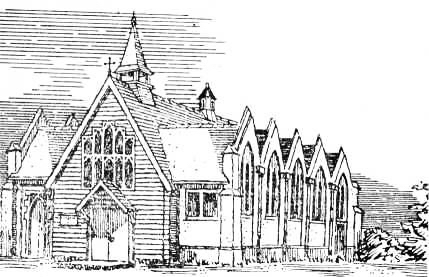
Formation Of The Parish
In July 1926, the Rev M Peters MA, a Cornishman — the first candidate ordained by the first Bishop of Chelmsford, Dr Watts-Ditchfield — after serving curacies in Leytonstone, Walthamstow and Southend, was appointed the first vicar of All Saints' Squirrels Heath.
One of his first duties was to commence the building of a new parochial hall, and operations in connection with this were commenced in January 1927.
The exterior dimensions were:— length 75 feet, width 30 feet, height 10 feet to the eaves and 25 feet to the apex of the roof. The structure was of steel framing encased in brickwork, and comprised a hall to seat roughly 250 people, exclusive of the platform. There was a small kitchen and artists' room as well as two sets of cloakrooms and toilets at the entrance. The whole was lit by electricity. The entire cost of the building, land and furniture was £1.680.
The Parochial Hall Opens
During the proceedings, the vicar called upon Archdeacon Bayne to open the sale and at the same time dedicate the parochial, hall.
In an opening statement, the vicar outlined the history of the hall, saying that_ he had: been told as soon as he came to the parish that a hall was needed. Then, he showed how step by step progress was made, beginning with the idea and plans for a wooden building and then proceeding, through the kindness of Messrs Bailey and Goates - who sent in low estimates - to the present spacious and substantial brick hall.
It was no exaggeration to say that it was the generosity of those good friends who were prepared to build the hall without profit, which made it possible to consider the erection of a brick building.
Another surprise awaited, for Mr JJ Crowe, who had been asked to design the hall and had supervised the building, told the vicar that he wished to make a present of his fee to the parish. There was therefore a saving of hundreds of pounds on the building and nearly £100 on architects' fees.
The old schoolroom in Factory Road, where All Saints had started and had been a church school connected with St Edward's Romford, to serve the little hamlet until the building of Squirrels Heath School in Salisbury Road, had been kept on by the church until November 1928.
Mission Hall of St Michael, Gidea Park
A Factory?
"a real social meeting place…"
The church building was much loved by its worshippers, as they had worked hard to get a church at all. It was full to overflowing especially for festivals. The structure itself was rather a mixture, the central aisle was the original 1884 structure, with the 1892 vestry and the wooden 1914 side aisles. In addition there was the new brick build chancel of 1933 for which the parish had borrowed a large sum of money.
The plan was to replace the wooden structure in brick like the chancel.
The War Intervenes
"At 12.45 an on May 11th 1941, a large parachute mine was dropped between All Saints' Parish Church and the church hall, with disastrous effects, both being completely destroyed. "The east end of the church was set ablaze and the force of the explosion finished the building entirely. Property adjoining, together with the Squirrel's Head & the Post Office, were also damaged. The New Inn also received its full share. The vicarage was damaged too.
"When I arrived early on the scene, I was appalled at the destruction. My first thought was to arrange for the usual services, except for the 8an Holy Communion as all the vessels were underneath the wreckage. "So I sent at once to our good friend Mr Hartley of the Royal Liberty School and without any hesitation he put the assembly hall at our disposal, end all was ready for the 11am - without, of course, the usual church appearance, but that did not matter. The services were heartily rendered and attended, especially at 6.30pm by excellent numbers of worshippers.
A wedding had to be transferred to St Michael's and a baptism in to the home of the infant.
The Remains of the Parochial Hall - 11th May 1941

"The Cross still stands"
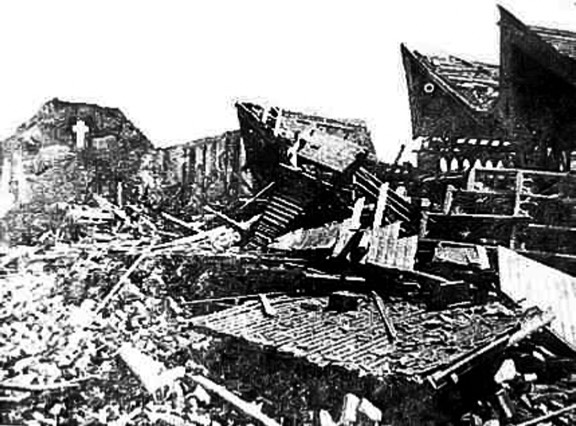
It was indeed a blessing…
Exterior & Interior of the temporary Church


A New Home
Laying the Foundation Stone of the new Church

Recollections & A New Church
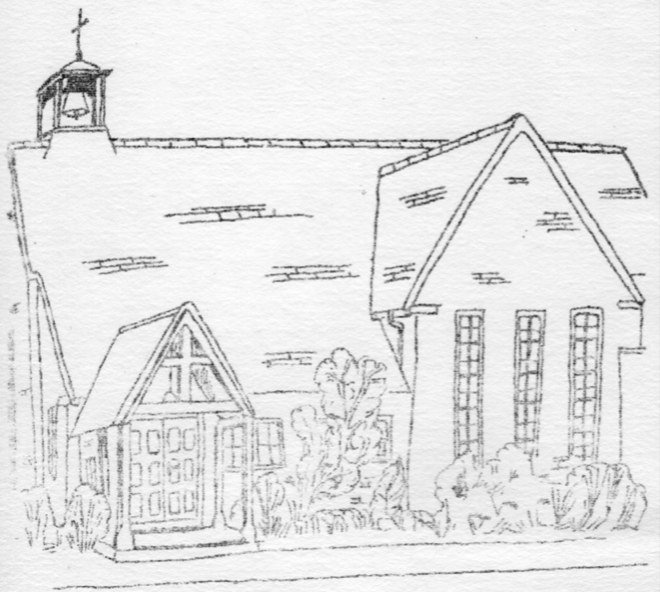
Contacts:
Vicar - Revd. Lisa Berwick
07477 995670
Church Warden - Laurie Cowie
lauriecowie00@gmail.com
07835 981728
Squirrels Heath, All Saints (Ardleigh Green)
Ardleigh Green Rd, Hornchurch Essex. UK RM11 2LU
Sunday Services:
Sunday Family Communion service is held at 10.30am. We hold separate Children's Groups during some Sunday Services.